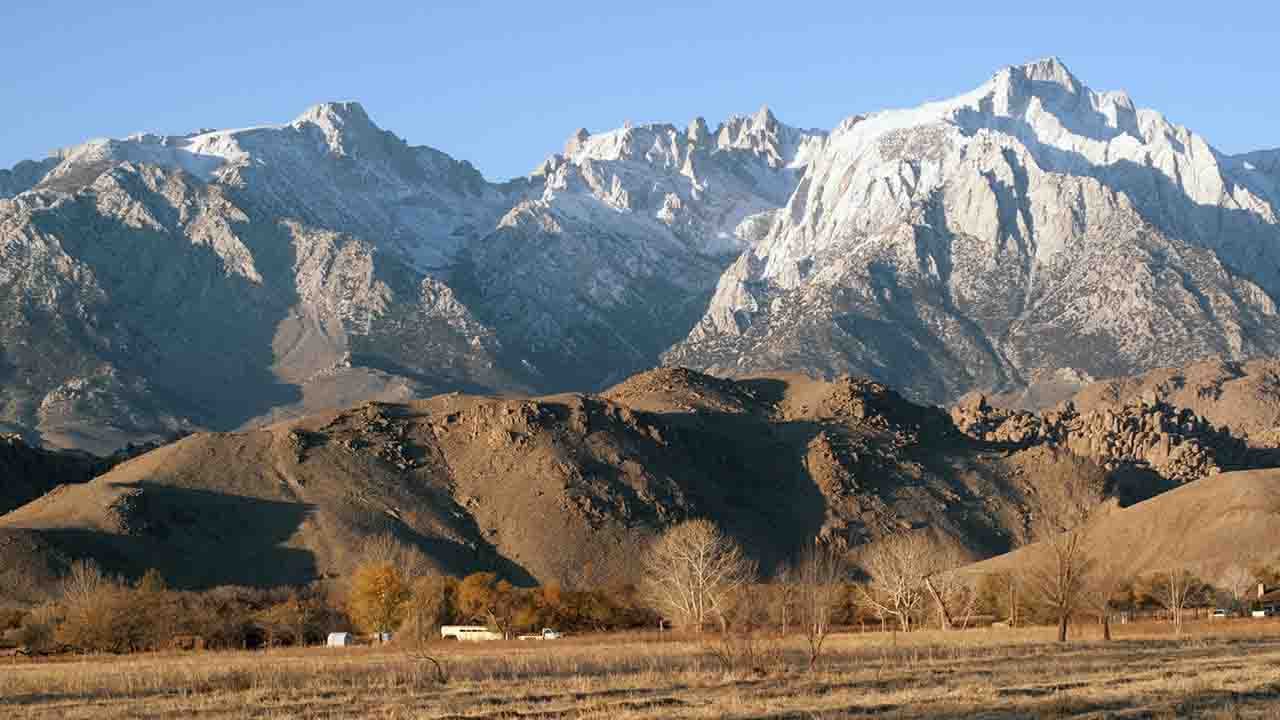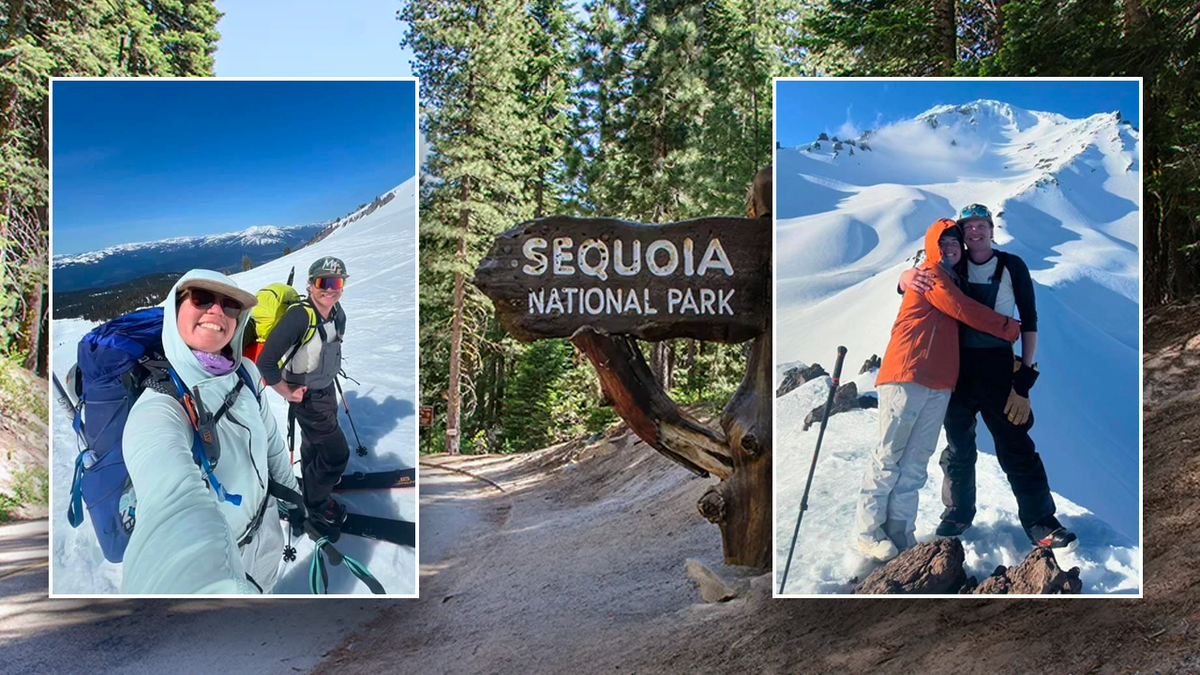California
Falling rock kills hiker near Mt. Whitney in California; third fatality in a week

A hiker was killed near Mt. Whitney on Sunday after being struck by a falling rock, marking the third fatality within a week near California’s highest peak, authorities said.
The hiker was in the North Fork of Lone Pine Creek Trail when bystanders reported that a rock fell and severely injured the individual, the Inyo County Sheriff’s Office said.
Search and rescue crews immediately responded to the scene via helicopter and lowered a team member down to the site of the accident. Rescuers determined the injured hiker had died from their injuries, the sheriff’s office said.
The hiker’s body was then airlifted to Lone Pine and turned over to the Inyo County Coroner. Officials did not immediately release the identity of the hiker or provide additional details.
BODIES OF MISSING HIKERS RECOVERED, IDENTIFIED AFTER DISAPPEARING ON HIKE UP CALIFORNIA’S HIGHEST PEAK
A rescue helicopter responded to the injured hiker’s location in the North Fork of Lone Pine Creek Trail. The hiker was pronounced dead at the scene. (Inyo County Sheriff’s Office)
It was the third hiker fatality in the Mt. Whitney region within a week.
The bodies of two missing hikers were recovered from the north face of Mount Whitney on Thursday. The hikers were identified as Andrew Niziol, 28, a resident of South Lake Tahoe, and Patty Bolan, 29. The pair were on a long-term hiking trip across the state of California.

The two previous fatalities were Andrew Niziol, 28, and Patty Bolan, 29. Their bodies were found on the north face of Mount Whitney after the couple went missing. (iStock/Andrew Niziol Facebook)
UTAH HUNTER FINDS SKELETAL REMAINS OF MAN MISSING SINCE 2019 IN REMOTE MOUNTAINS
Officials cautioned those visiting the area to be aware of the changing weather conditions as the seasons shift.

Mt. Whitney has an elevation of 14,505 feet. (Santi Visalli/ Getty Images, File)
“Early spring conditions prevail on the mountain, with treacherous steep snow, loose rock, and variable weather,” the Inyo County Sheriff’s Office said. “Parties venturing onto Mt. Whitney should stay together, turn around before deteriorating conditions become unmanageable, make responsible decisions, and be prepared and fit.”
CLICK TO GET THE FOX NEWS APP
Mt. Whitney is the highest mountain in the contiguous U.S., reaching an elevation of 14,505 feet. More than 25,000 visitors per year seek to summit Mt. Whitney, according to the National Park Service.
Fox News’ Stepheny Price contributed to this report.

California
California residents flee massive wildfire sparked by burning car

Thousands of Northern California residents were forced to evacuate their homes as a massive wildfire scorched more than 250 square miles. The Park Fire, California’s largest this year, was started by a man who pushed a burning car into a gully.
California
California's billionaire utopia faces a major setback

Silicon Valley’s billionaire-backed plan to turn 60,000 acres into a utopian “city of yesterday” is officially delayed by at least two years. California Forever confirmed on July 22 that its “East Solano Plan” rezoning proposal will not appear on the region’s November election ballot. Instead, the $900 million project will first receive a full, independent environmental impact review while preparing a development agreement with local county supervisors.
Speaking with The New York Times this week, California Democratic state senator John Garamendi said, “The California Forever pipe dream is in a permanent deep freeze.”
First unveiled in August 2023 after years of stealth land purchases just outside San Francisco, organizers bill the 60,000 acre East Solano Plan as a multistep campaign to build “one of the most walkable and sustainable [towns] in the United States.” Concept art on California Forever’s website depicts idyllic pedestrian squares and solar farms, with lofty promises to bring hundreds of thousands of jobs to the area along with “novel methods of design, construction, and governance,” according to a previous profile. Overseen by former Goldman Sachs trader Jan Sramek, California Forever received financial backing from wealthy venture capitalists including LinkedIn’s co-founder Reid Hoffman and Lauren Powell Jobs, billionaire philanthropist and widow of Steve Jobs.
[ California’s billionaire utopia may not be as eco-friendly as advertised.]
But from the start, locals, environmental advocates, and politicians pushed back against the East Solano Plan. By November 2023, news broke that California Forever’s parent company previously sued a group of locals for $510 billion, citing antitrust violations after the defendants refused to sell their land (the locals later agreed to sell for $18,000 per acre). Meanwhile, state representatives voiced security concerns about the proposed city’s proximity to the nearby Travis Air Force Base.
Last month, the accredited Solano Land Trust announced its opposition to the plan, citing what it believed would be a “detrimental impact” to the region’s “water resources, air quality, traffic, farmland, and natural environment.” The land trust also alleged California Forever backers misled the public by describing much of the area as “non-prime farmland” with “low quality soils.” In reality, the Solano Land Trust explained that the “sensitive habitat… home to rare and endangered plants and animals” includes some of the state’s most water-efficient farmland.
In this week’s announcement, Sramek claims a recent poll conducted by California Forever indicated 65 percent of East Solano residents “support development of good paying jobs, more affordable homes, and clean energy,” while noting that “most voters are also asking for a full environmental impact report to be completed first.”
“The idea of building a new community and economic opportunity in eastern Solano seemed impossible on the surface,” Sramek wrote to Popular Science last year. “But after spending a lot of time learning about the community, which I now call home, I became convinced that with thoughtful design, the right long-term patient investors, and strong partnerships… we can create a new community.”
California
Tech Jobs Keep Moving Out of California. Don’t Panic Yet.

It has been a weird four years for California’s technology sector. It boomed early in the Covid-19 pandemic as people in the US and around the world geared up for remote work and directed their spending to online services (games, streaming, spin classes, etc.) they could consume without leaving home. But that rise in remote work, combined with highest-in-the-nation real estate costs, strict pandemic rules and other factors, also led to something of an exodus from the state’s coastal cities, with high-profile departures of tech leaders in 2020 and 2021 and even occasional claims that the San Francisco Bay Area’s reign as global tech capital was ending.
A few high-profile departures are still taking place, with Elon Musk announcing this month that he will be moving the headquarters of two more of his companies — X, the former Twitter, and SpaceX — from California to Texas, where he moved Tesla Inc.’s headquarters in 2021. But there have also been stories of tech leaders returning and San Francisco beginning a resurgence, with the boom in generative artificial intelligence — the biggest story in tech now — very much concentrated around the San Francisco Bay. My fellow Bloomberg Opinion columnist Conor Sen thinks it might even be a good time to buy some slightly marked-down San Francisco real estate.
-

 World1 week ago
World1 week agoOne dead after car crashes into restaurant in Paris
-

 Midwest1 week ago
Midwest1 week agoMichigan rep posts video response to Stephen Colbert's joke about his RNC speech: 'Touché'
-

 News1 week ago
News1 week agoVideo: Young Republicans on Why Their Party Isn’t Reaching Gen Z (And What They Can Do About It)
-

 Movie Reviews1 week ago
Movie Reviews1 week agoMovie Review: A new generation drives into the storm in rousing ‘Twisters’
-

 News1 week ago
News1 week agoIn Milwaukee, Black Voters Struggle to Find a Home With Either Party
-

 Politics1 week ago
Politics1 week agoFox News Politics: The Call is Coming from Inside the House
-

 News1 week ago
News1 week agoVideo: J.D. Vance Accepts Vice-Presidential Nomination
-

 World1 week ago
World1 week agoTrump to take RNC stage for first speech since assassination attempt














